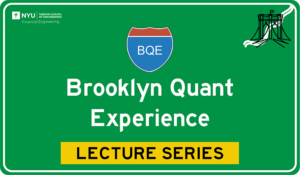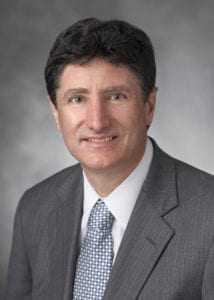
The Department of Finance and Risk Engineering at NYU Tandon School of Engineering, welcomes Sanjay K. Nawalkha, Professor of Finance, University of Massachusetts, to the BQE Lecture Series on Thursday, November 5, 2020, at 6 p.m. on Zoom.
Meeting ID: 945 2031 9822
Password: BQESN
Title
A Theory of Equivalent Expectations Measures for Expected Prices of Contingent Claims
Abstract
This paper introduces a theory of equivalent expectation measures, such as the R measure and the R1T measure, generalizing the martingale pricing theory of Harrison and Kreps (1979) for deriving analytical solutions of expected prices (both the expected current price and the expected future price) of contingent claims. We also present new R-transforms which extend the Q-transforms of Bakshi and Madan (2000) and Duffie et al. (2000), for computing the expected prices of a variety of standard and exotic claims under a broad range of stochastic processes. Finally, as a generalization of Breeden and Litzenberger (1978), we propose a new concept of the expected future state price density which allows the estimation of the expected future prices of complex European contingent claims as well as the physical density of the underlying asset’s future price, using the current prices and only the first return moment of standard European OTM call and put options.
Bio
Sanjay Nawalkha is a Professor of Finance at the Isenberg School of Management. His areas of research are fixed income valuation, derivative pricing, and asset pricing. Professor Nawalkha chaired the Finance Department at the Isenberg School of Management from Sept. 2011 until August 2018. He has co-authored four books, Dynamic Term Structure Modeling: The Fixed Income Valuation Course (Wiley & Sons, 2007), Interest Rate Risk Modeling: The Fixed Income Valuation Course (Wiley & Sons, 2005), Interest Rate Risk Measurement and Management (Institutional Investors, 1999) and Closed-Form Duration Measures and Strategy Applications (The Research Foundation of the Institute of Chartered Financial Analysts, 1990). He has published over 35 scholarly articles in the areas of term structure modeling, risk management, and arbitrage pricing theory.

 Dr. Peter Carr has been chair of the finance and risk engineering department at NYU Tandon School of Engineering for the last four years. He also presently serves as a trustee for the National Museum of Mathematics and WorldQuant University. Previously, he had a 20-year career heading quant groups in finance. Prior to joining the financial industry, Dr. Carr was a finance professor at Cornell University, after obtaining his Ph.D. from UCLA in 1989. He has more than 90 publications in academic and industry-oriented journals and serves as an associate editor for eight journals related to mathematical finance. He was selected as Quant of the Year by Risk Magazine in 2003 and Financial Engineer of the Year by IAQF/Sungard in 2010.
Dr. Peter Carr has been chair of the finance and risk engineering department at NYU Tandon School of Engineering for the last four years. He also presently serves as a trustee for the National Museum of Mathematics and WorldQuant University. Previously, he had a 20-year career heading quant groups in finance. Prior to joining the financial industry, Dr. Carr was a finance professor at Cornell University, after obtaining his Ph.D. from UCLA in 1989. He has more than 90 publications in academic and industry-oriented journals and serves as an associate editor for eight journals related to mathematical finance. He was selected as Quant of the Year by Risk Magazine in 2003 and Financial Engineer of the Year by IAQF/Sungard in 2010.